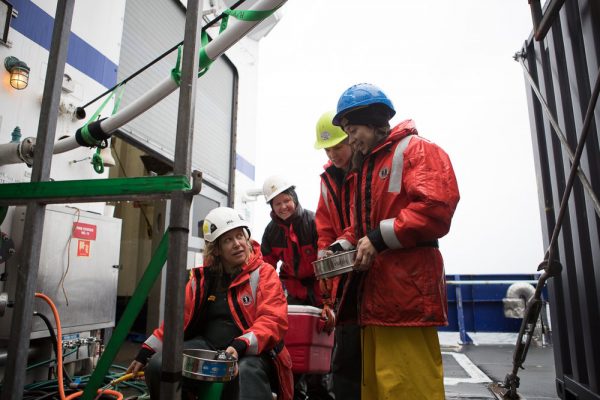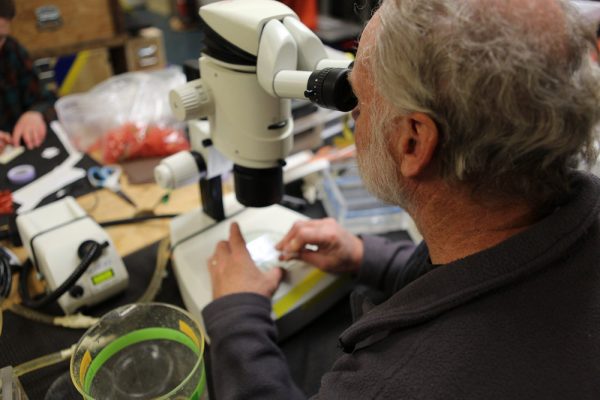Spring Sikuliaq cruise launches new Bering, Chukchi research program
July 18, 2017
Lauren Frisch
907-474-5350

University of Alaska Fairbanks scientists have completed the first cruise in a new comprehensive program studying late spring dynamics in the Bering and Chukchi seas.
Researchers from the College of Fisheries and Ocean Sciences spent the month of June 2017 on research vessel Sikuliaq investigating variables that influence spring productivity and food web dynamics, and studying how declining ice cover may influence Arctic ecosystems.
“Scientists have tended to study the Arctic later in the summer, when ice is low and it’s easier to get around,” said CFOS professor and chief scientist Seth Danielson. “But there are biologically important processes that also occur in winter and spring, so our focus is shifting to these other times of year, and how such processes impact the ecosystem that we have observed later in the summer.”
During the June cruise, the researchers measured growth rates, oxygen consumption rates, productivity rates, sinking rates of particles and how quickly ocean currents affect the flow of water and materials from south to north. They took samples from the water column and the seafloor sediments.
Much of the data they collected still needs to be processed and analyzed, so the team won’t have final results for months or even years. But CFOS professor Russ Hopcroft noticed a few surprising things while on board.
“The water was a lot warmer than we were anticipating at this time of year,” said Hopcroft. “But without knowing how this compares to other years and other regions, it’s hard to put that information in perspective. That’s why it’s so important to study different regions year after year in the Arctic. Things are rapidly changing, and we need to get a grasp on what normal is now to be able to measure this change.”
Hopcroft’s plankton team observed a dominance of Neocalanus copepods, tiny animals at the bottom of the food chain that are transported seasonally from the Gulf of Alaska.

“If this was a typical year, then we’ve really underestimated how important Neocalanus are as a seasonal food resource for species higher up in the food chain,” Hopcroft said.
Because Neocalanus cannot spawn successfully in the Arctic, Hopcroft said, he did not expect the species to be more abundant than plankton that live in the Arctic permanently. The abundance of Neocalanus is important because the makeup of the species at the bottom of the food chain can dictate energy and food availability for fish and marine mammals higher up in the food chain. More years of sampling are necessary to determine whether this abundance reflects normal conditions for the time and region.
This cruise was the first in the North Pacific Research Board’s new Arctic Integrated Ecosystem Research Program, a five-year program focusing on how reduced sea ice influences the Arctic marine ecosystem. The research program is sponsored by the North Pacific Research Board, the Collaborative Alaskan Arctic Studies Program, the Bureau of Ocean Energy Management, and the Office of Naval Research Marine Mammals and Biology Program, along with in-kind support from the National Oceanic and Atmospheric Administration and UAF.


